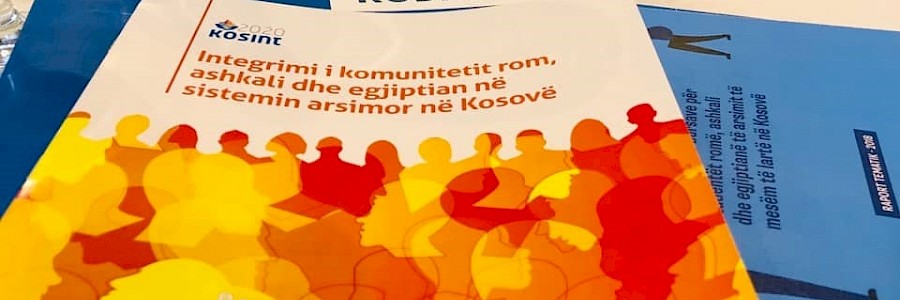Prishtina, on February 22, has been presented the report "Integration of Roma, Ashkali and Egyptian Communities into the Education System in Kosovo in 2018". Participants in this presentation were representatives of civil society who helped improve the inclusion of Roma, Ashkali and Egyptian students in education.
This report has been prepared as an effort to follow the implementation of the Roma and Ashkali community integration strategy in Kosovo society (2017-2021), with a clear focus on the education dimension. In addition, the monitoring report also includes measures and activities of parts of KESP 2017-2021 for the integration of Roma, Ashkali and Egyptian communities for the period 2017-2021.
The methodology used for this evaluation was made based on data from statistics and reports available at national and municipal level on one side and data collected by municipalities and MEST.
Regarding the attendance of students from Roma, Ashkali and Egyptian communities, the sources show that it seems to be a very promising trend. The number of students from Ashkali and Egyptian communities has increased in all levels of education. Meanwhile, the number of students from the Roma community has also increased at all levels, with the exception of grades 1-9 (primary and lower secondary).
MEST data showed that there were 75 students from the three communities who were enrolled in public higher education institutions in Kosovo in the academic year 2017/2018. Data from the academic year 2018/2019 are not available yet, but it is well known that the public higher education providers have respected the quota provisions reserved this year as well.
Cases of school dropout by students reported by MEST SMIA for the last two years (2016/2017 and 2017/2018) of education have decreased for all three communities. Of the total 119 pupils who dropped out of school in 2016/2017, the number decreased to 88 in 2016/2017.
With regard of support to motivate families to send their children to school and to continue it until the end, KESP 2017-2021 has foreseen a scholarship provision for students going to secondary schools. The data from MEST show that for the students of the Roma, Ashkali and Egyptian communities who continue the secondary education, a total of 600 scholarships (300 euros each) have been made available. In the previous year (2017), MEST offered 507 scholarships. So there is a growing trend and this seems to be determined by the availability of donor funding for this scholarship fund.
The report concludes that the participation of Roma, Ashkali and Egyptian students is very promising and that a positive trend can be noticed. In addition to statistics, meetings and interviews with municipal authorities have shown that the situation is improving also with regard to the interest of families for their children's education.

